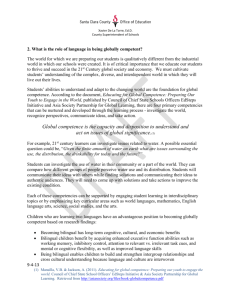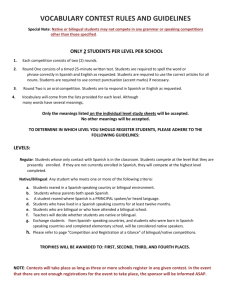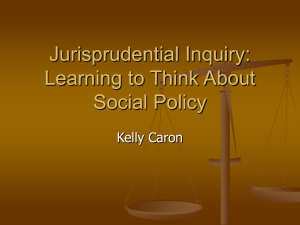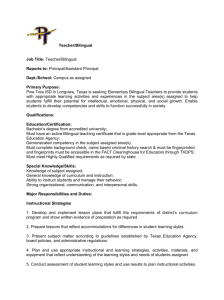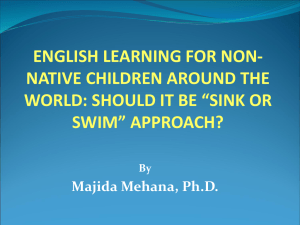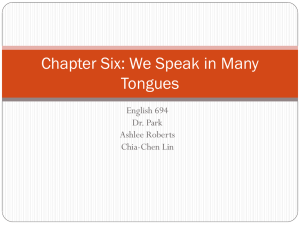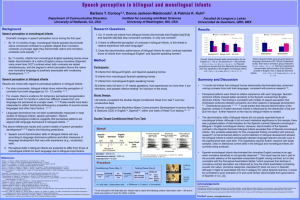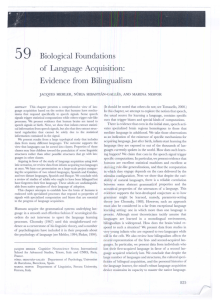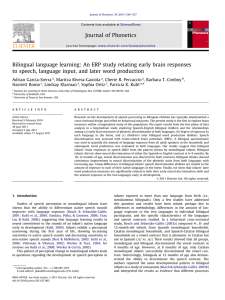Bilingual Infants & Acoustic Sensitivity: A Research Study
advertisement
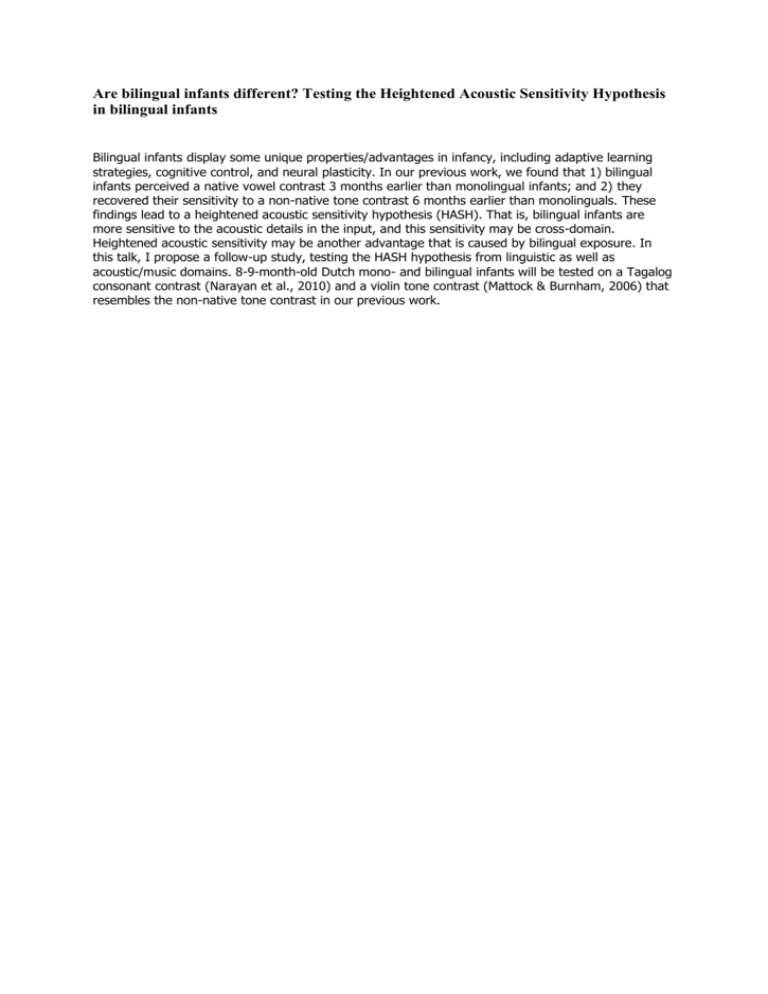
Are bilingual infants different? Testing the Heightened Acoustic Sensitivity Hypothesis in bilingual infants Bilingual infants display some unique properties/advantages in infancy, including adaptive learning strategies, cognitive control, and neural plasticity. In our previous work, we found that 1) bilingual infants perceived a native vowel contrast 3 months earlier than monolingual infants; and 2) they recovered their sensitivity to a non-native tone contrast 6 months earlier than monolinguals. These findings lead to a heightened acoustic sensitivity hypothesis (HASH). That is, bilingual infants are more sensitive to the acoustic details in the input, and this sensitivity may be cross-domain. Heightened acoustic sensitivity may be another advantage that is caused by bilingual exposure. In this talk, I propose a follow-up study, testing the HASH hypothesis from linguistic as well as acoustic/music domains. 8-9-month-old Dutch mono- and bilingual infants will be tested on a Tagalog consonant contrast (Narayan et al., 2010) and a violin tone contrast (Mattock & Burnham, 2006) that resembles the non-native tone contrast in our previous work.



